After retiring in February 2021, eagles and ospreys were near the top of my list of desired photographic subjects. At the time I had only a few images of bald eagles, with only one in-flight image. I’d had more success with ospreys, both nest and flight images, but only one in-flight image of an osprey with fish. The problem I had was determining what locations would give me the best opportunities to capture these subjects.
For eagles the possibilities included trips and/or workshops to Alaska, a trip to Florida where I had photographed nesting eagles before, or a trip to the Conowingo Dam in Maryland. The images of eagles that I most wanted to capture were of eagles catching fish in the waterways. The two best options seemed to be either an expensive workshop in Alaska or a trip to Conowingo Dam. I initially decided to give Conowingo Dam a try as an expensive workshop was something that I hoped to avoid.
There were a lot of online articles on photographing eagles at the Conowingo Dam. There is even a Facebook Group entitled Conowingo Dam Eagles. Brice Goodwin has written a worthwhile book entitled The Eagles of Conowingo Dam: Tools and Tips for a Successful Photography Trip. The paperback is $4.99 with the Kindle version $2.99. The eagles concentrate at the dam because some fish are stunned, injured, or killed as they pass through the turbines of the hydroelectric dam. The eagles are most numerous and active in November and December. A second period of increased activity is during the shad run in the April-May timeframe.
I have not yet made a trip to Conowingo Dam, because my research led me to investigate the possibilities that other, closer areas might yield subjects. And I was able to find two dams within an hour and a half of my home, one visited regularly by ospreys and the other by both eagles and ospreys. The birds gather at these locations for the concentration of fish passing through the dam and easy pickings among the injured fish.
However most of the eagle and osprey images in this two-part article were taken on the James River near Richmond, Virginia, on boat tours led by Captain Mike Ostrander. I learned of his Discover the James River Tours during my online research of eagle photography locations. Capt. Mike has been fishing the James River for over 20 years and leading eagle/osprey boat tours for 13 years. He is very knowledgeable of the ecology of the region and fthe biology/behavior of eagles, ospreys, and other wildlife along the James River. He knows the territorial boundaries of the resident eagles and can recognize many of the individual eagles by sight. His knowledge and passion for the James River ecosystem is well-known. He is a recipient of the “Steward of the James” award, presented by the James River Advisory Council, and has been recognized as a “River Hero” by the Friends of James River Park. Photographers will enjoy his tours because he factors in wind direction, light direction and backgrounds to position the boat in the best location for pleasing images. I highly recommend taking a trip with him for some incredible opportunities to capture images of eagles in action.

The Bald Eagle
Many people assume the bald eagle is the national bird. It isn’t. Our country has a national mammal-the bison, a national tree- the oak and a national flower- the rose, but has never named a national bird. In 1782 the bald eagle was incorporated into the Great Seal of the United States. It seemed like a natural choice. The bald eagle is endemic to North America. It provides an imposing presence, almost regal in appearance– a powerful symbol of strength, courage, independence and freedom.
But not everyone viewed the eagle in those terms. There was a definite dichotomy between the Bald Eagle, the emblem of the United States, and the avian species as viewed by the populace. John James Audubon, in his account of the bald eagle, writes:
“In concluding this account of the White-headed Eagle, suffer me, kind reader, to say how much I grieve that it should have been selected as the Emblem of my Country. The opinion of our great Franklin on this subject, as it perfectly coincides with my own, I shall here present to you. ‘For my part,’ says he, in one of his letters, ‘I wish the Bald Eagle had not been chosen as the representative of our country. He is a bird of bad moral character; he does not get his living honestly; you may have seen him perched on some dead tree, where, too lazy to fish for himself, he watches the labour of the Fishing-Hawk; and when that diligent bird has at length taken a fish, and is bearing it to his nest for the support of his mate and young ones, the Bald Eagle pursues him, and takes it from him. With all this injustice, he is never in good case, but, like those among men who live by sharping and robbing, he is generally poor, and often very lousy. Besides, he is a rank coward: the little King Bird, not bigger than a Sparrow, attacks him boldly, and drives him out of the district. He is, therefore, by no means a proper emblem for the brave and honest …’ “

Opinions changed little over the next 100 years. Arthur Cleveland Bent wrote in 1937, “On June 20, 1782, our forefathers adopted as our national emblem the bald eagle, . . . a fine looking bird , but one that is hardly worthy of the distinction. Its carrion-feeding habits, its timid and cowardly behavior, and its predatory attacks on the smaller and weaker osprey hardly inspire respect and certainly do not exemplify the best in American character.”
Many viewed the bald eagle as a pest, a thief, a scavenger, a scourge on the fishing industry, game birds, poultry, sheep and pigs. There were even claims (none substantiated) that the bald eagle would snatch up infants and small children. This myth was perpetuated by some ornithologists of the time, as well as being depicted in an eight-minute 1908 silent film entitled Rescued from an Eagle’s Nest, produced by Thomas Edison’s Edison Studios and starring D.W. Griffiths of Birth of a Nation fame.
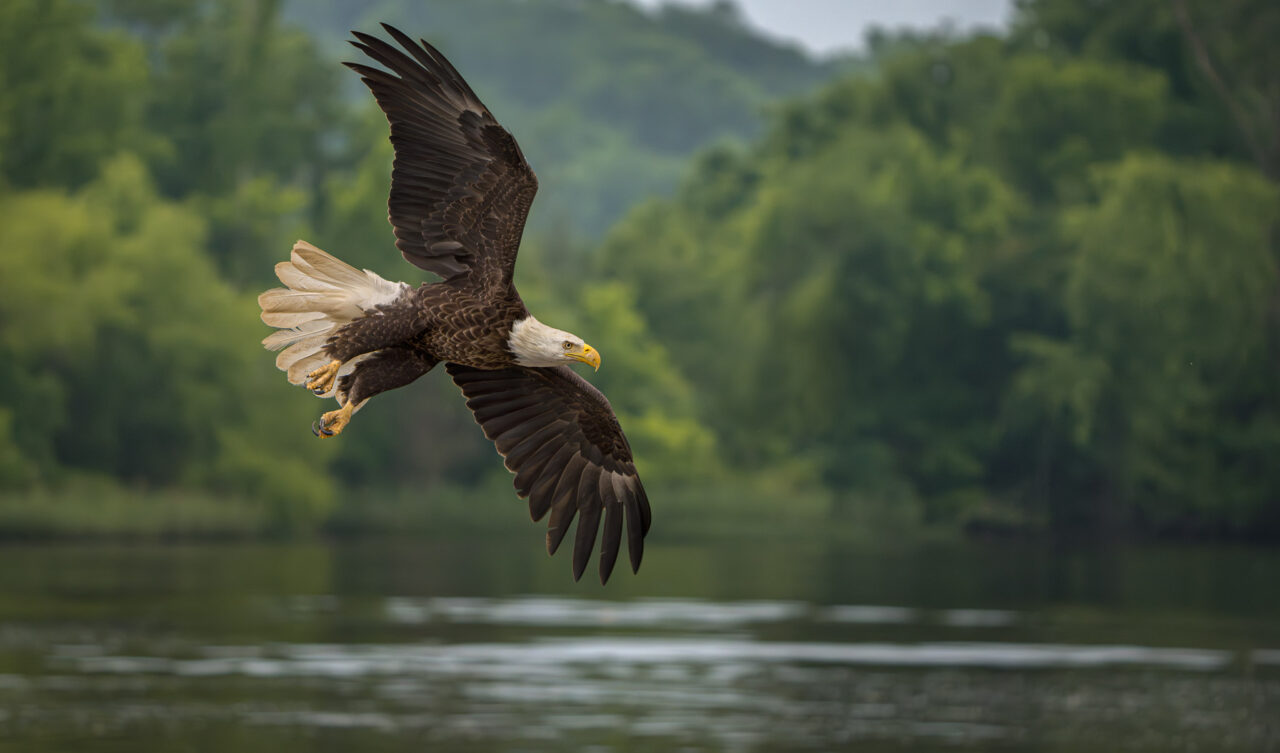
The predators of the skies were viewed in much the same way as land borne predators at the time, like the wolf and coyote. Their persecution was relentless. Bounties were still being paid on bald eagles as late as 1952.
The persistent destruction of bald eagles, coupled with loss of habitat and decreased numbers of certain preferred food sources, resulted in a precipitous decline in the population. It has been estimated that, in the 1600’s, there were up to 500,000 bald eagles in North America. By 1970, there were only about 10,000, with less than 500 breeding pairs. In 1967, it had been listed as an endangered species under the 1966 Endangered Species Preservation Act.
The Bald Eagle Protection Act of 1940 provided protection of the bald eagles in the lower 48 states. Alaska was excluded because bald eagles were thought to compete with fishermen for salmon. Studies later showed that eagles had no detrimental effect on salmon numbers, and in 1952 Alaska was added to the Act.
Soon after the passage of the Act, another threat appeared on the scene. The pesticide DDT was introduced in 1946. A fat-soluble breakdown product, DDE, concentrated in the tissues of animals within the food chain. Raptors at the top of the food chain, such as eagles and ospreys, developed high levels that resulted in the thinning of egg shells. The eggs would be crushed by the weight of the incubating parent. Fortunately, DDT was banned in Canada in 1970 and the U.S. in 1972 and the path was cleared for a remarkable recovery. In 2007 the bald eagle was removed from the Federal List of Endangered and Threatened Species. In 2021, there were an estimated 317, 000 bald eagles in the lower 48 states, with 71,000 breeding pairs.
Fortunately, over the years the negative attitudes toward the bald eagle have largely dissipated and this “king of the birds” receives the respect it deserves.

Bald Eagle Facts
Bald eagles are thought to mate for life. They can live up to 20-30 years in the wild, with the oldest on record living 38 years (banded in 1977, struck by car in 2015).
Females are 20-25% larger than males. Juveniles or sub-adults are larger than adults due to longer wing and tail feathers (primary and secondary wing feathers 10% longer, tail feathers 20% longer). Eagles in the north are larger than eagles in the south (an example of Bergmann’s Rule).
It can take 4-5 years for juvenile to assume adult plumage. Although one will on rare occasions see a sub-adult breeding, most eagles do not breed until 5-6 years of age.
Nests can vary greatly in size and shape. Eagle will often re-use nests for many years, adding to it each year. Typical nest is 5-6 feet in diameter and 2-4 feet tall. The largest nest on record (1999 reference) was 9.5 feet in diameter and 20 feet tall, and weighed about 2 tons.
Ethical Considerations for Photographers
At the Nest: Contrary to what one might expect, raptors are generally more sensitive to human disturbance than most smaller birds, and are more likely to abandon a nest when disturbed. Of course there are exceptions among the different types of raptors, as well as individual differences within a species. The osprey is much more tolerant of nearby human activity than bald eagles. And breeding birds in remote areas are generally more sensitive than birds that choose to breed closer to humans.
The two keys to ensure that you are not disturbing or altering the behavior of nesting eagles are: 1) Do your research in advance (refer to references such as those listed below, and 2) Observe your subjects from a distance (with binoculars) and determine their normal routines. Research, Step 1, provides you the knowledge of the typical biology/behavior of the species. It also allows you to better understand the behaviors you are observing in Step 2. Observation from a distance, Step 2, allows you to understand the behavior of the individuals in this particular situation. Only by knowing normal routine behavior, can you truly determine if you are altering it.
I’ve photographed bald eagles at the nest twice, both times early in my “career” as a wildlife photographer. I would have approached these situations differently today. At the first nest, the adults were off the nest when I arrived and I could see two large nestlings in the nest. I set up in some brush and waited, hoping to capture images of the eagles as they brought in food items for the young. Unfortunately, when they returned all I was able to capture were rear-end shots as the eagles returned with fish.
At the second nest, there was one adult on the nest, and it flew away when I arrived (which was the first clue to be concerned). There were signs that stated to stay at least 150 feet away from the nest., which I made sure to follow. The eagle landed at a more distant tree and was soon joined by its mate. I could not see any young on the nest, so I did not know if the nest was empty or if there were eggs or very small nestlings in the nest.. Without this knowledge I decided to leave the area. I stopped at the end of the road and watched through binoculars as the eagles flew back to the nest. Obviously my actions drove the eagles off the nest, and repeated disturbances of this nature could potentially have caused the eagles to abandon the nest. If I were to attempt to photograph that nest today, I would have stopped at a much greater distance than 150 feet away and observed the nest through binoculars for a number of hours before even attempting photography.
Eagles are most likely to abandon a nest site if disturbed during courtship and nest building, or during egg laying and incubation. When the nestling are very small they cannot thermo-regulate their body temperatures. Causing the eagles to leave a nest during this period can harm the young.
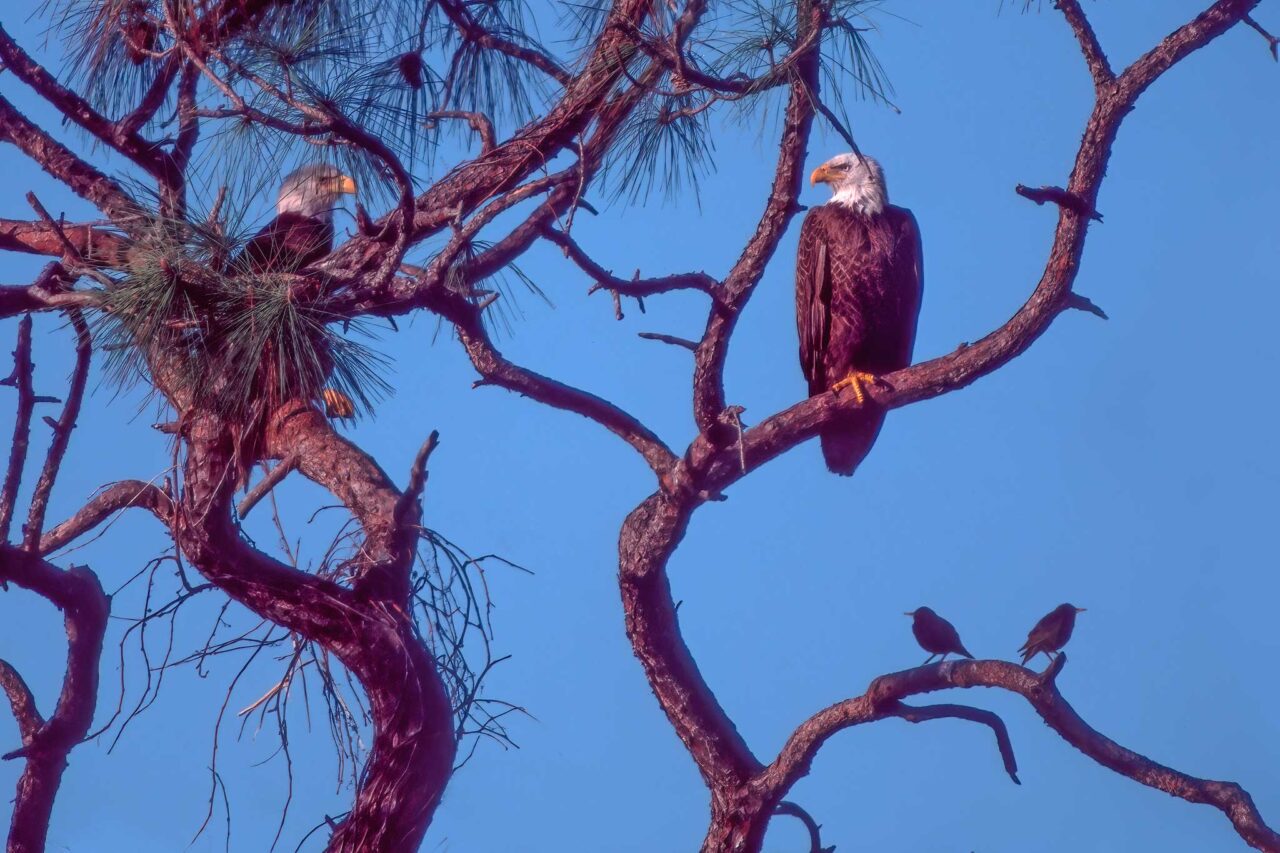
References
The Bald Eagle: The Improbable Journey of America’s Bird, Jack Davis, 2022.
Eagle’s Plume: Preserving the Life and Habitat of America’s Bald Eagle, Bruce Bean, 1996.
The Bald Eagle: Haunts and Habits of a Wilderness Monarch, Jon Gerrard and Gary Bortolotti, 1988.
The Bald Eagle, Mark Stalmaster, 1987.
Life Histories of North American Birds of Prey: Part One, Arthur Cleveland Bent, 1937.
U.S. Fish and Wildlife Service–Bald Eagle Fact Sheet, 2021


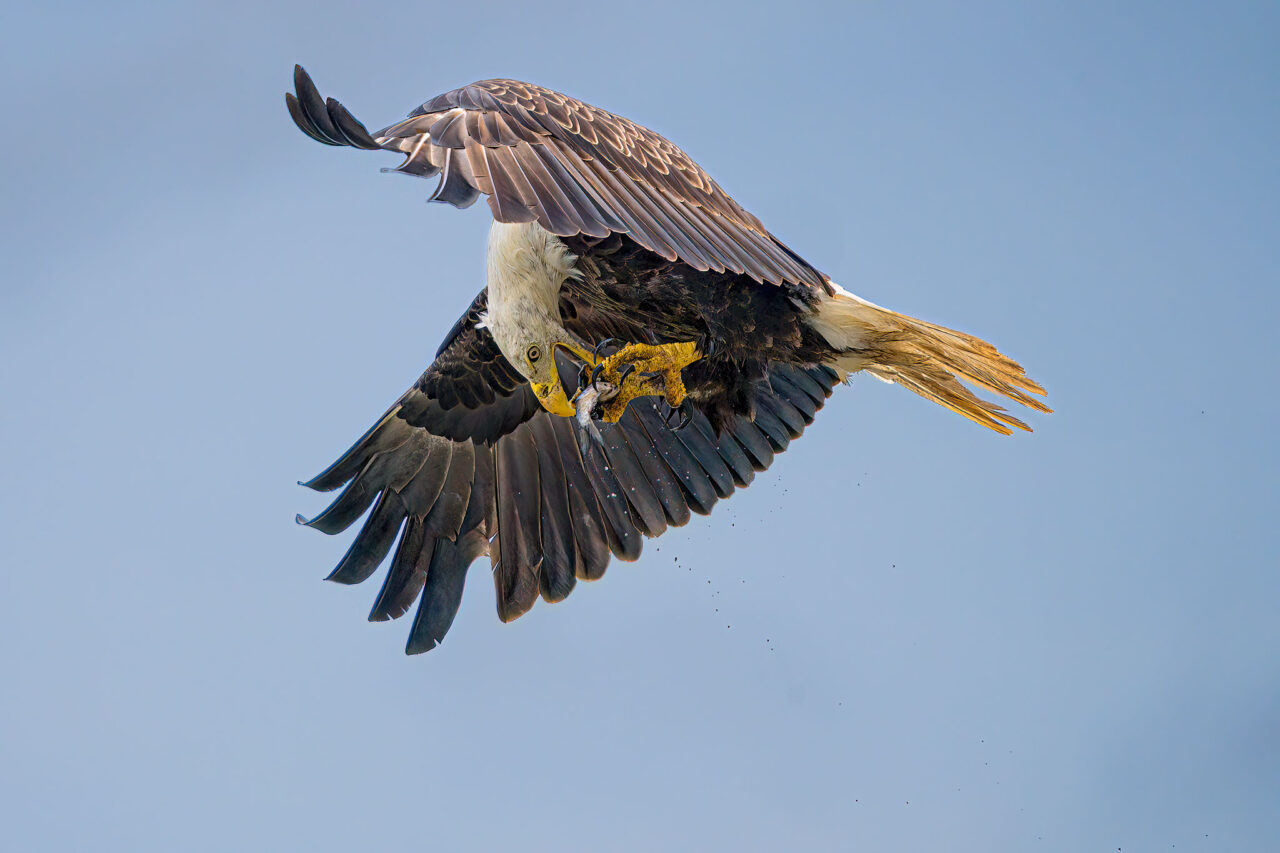













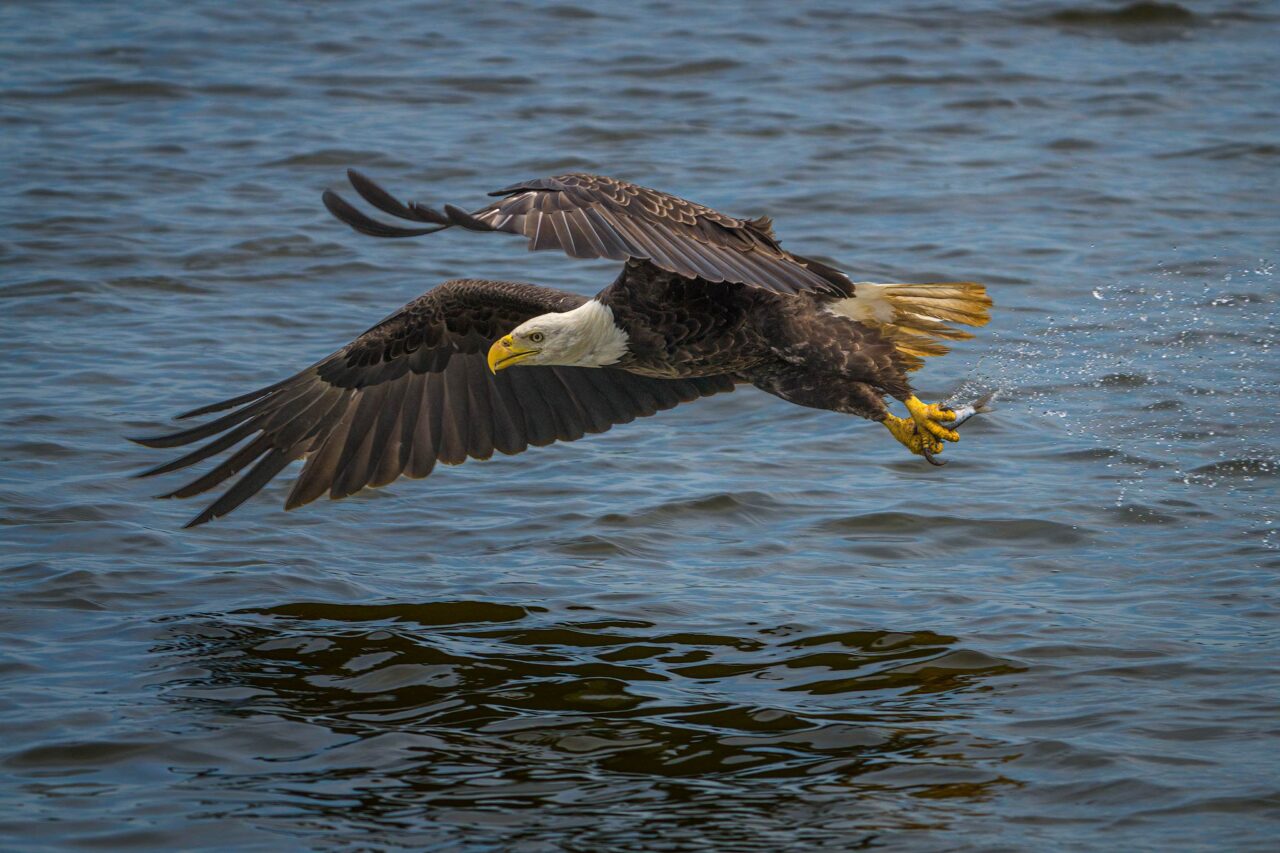










The images below were all taken at a dam in North Carolina.


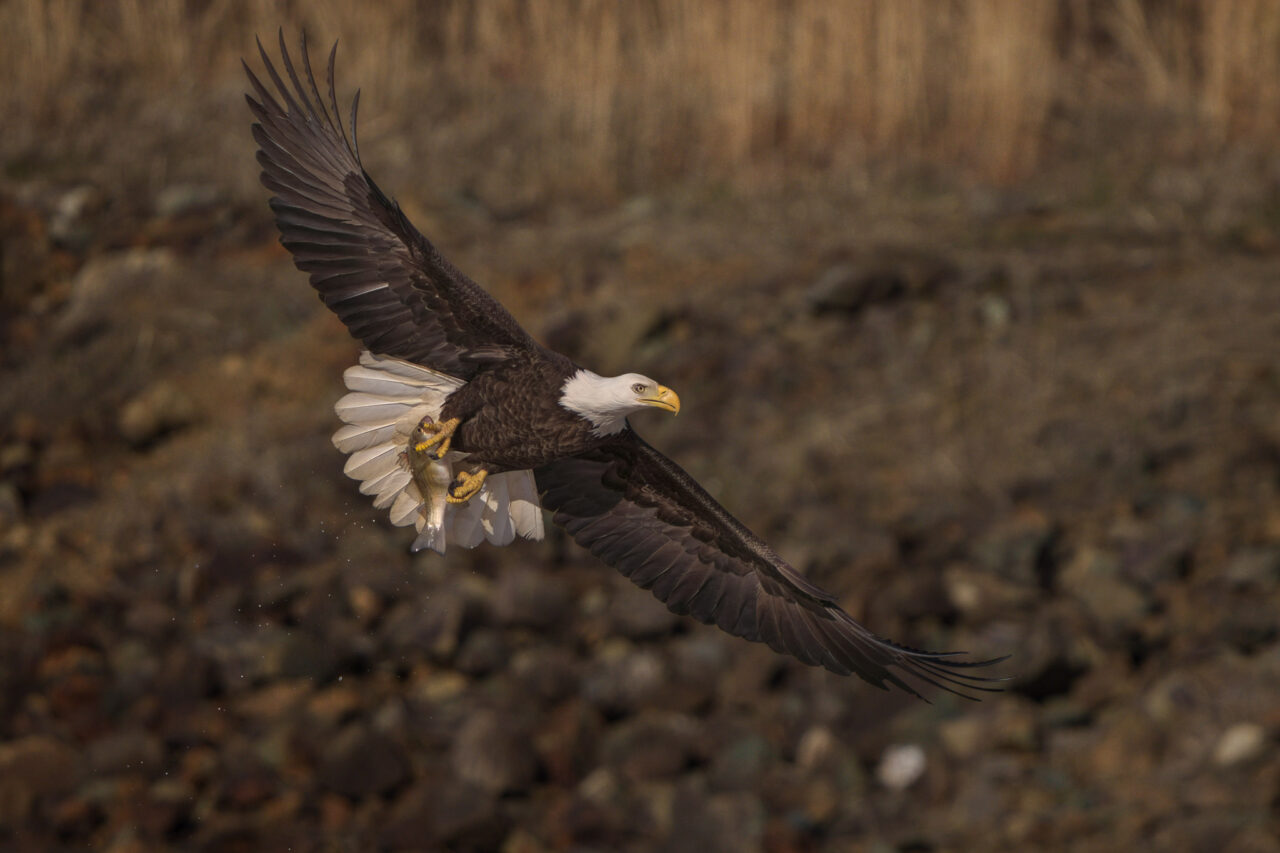





More bald eagle images can be seen in my blog article Eagle Pan-Blurs.
Stay tuned for Part 2 of this article: Eagles and Ospreys. Part 2: Ospreys.

